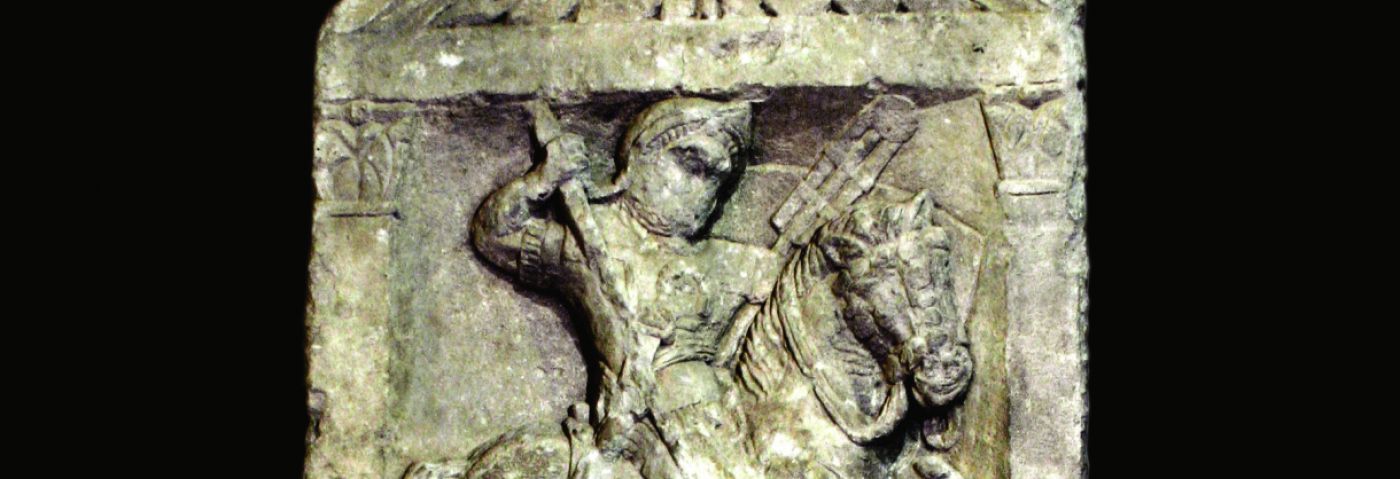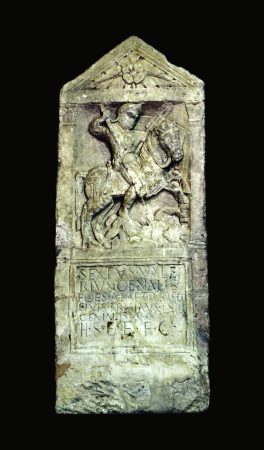...what does it tell us?
Upon entering Corinium Museum you will be struck by this superb example of a Roman cavalry tombstone. This find dates from the late 1st or beginning of the 2nd century (c.60 CE), and was unearthed in Watermoor, Cirencester in 1836. Particularly fascinating is its imposing scale and the breadth of detail present. The intricate craftsmanship alone points strongly to a man who was once a very important figure. It is one of only 50 such tombstones found throughout the whole of the Roman Empire.
Who was Genialis?
The inscription tells us that Genialis was from the Frisiavones tribe of Gallia Belgica. This province was situated in the north-eastern part of Roman Gaul, which is now Belgium. By this time the Roman army had become a melting pot of peoples from across the ever expanding empire. Genialis is depicted on horseback in extensive armour, in sharp contrast with a bearded naked figure, cowering beneath his horse’s hooves. The inscription is written in Latin but it commemorates a man who originated in a region that did not natively speak Latin. By the time of his death he clearly identified with the Roman Empire, not with the ‘barbarian’ beneath his horse’s feet. The irony being that his ancestors were once those on the receiving end of the spear.
How do we know he was an auxiliary soldier?
From the 1st century BCE, cavalrymen were provided from provinces outside of Italy. The inscription states that Genialis was part of the cavalry regiment of Thracians. Auxiliary soldiers were recruited from non-Roman tribes, and men such as Genialis would have provided support for the Roman legionaries. Therefore, Genialis was clearly not a legionary soldier.
What makes this tombstone unique?
This is a very well-crafted tombstone with an impressive level of detail. It would have cost a considerable sum of money to craft and most within Roman society would not have been able to afford it. The inscription states that Genialis served in the army for 20 years, by the time of his death at the age of 40 he must have been a man of considerable achievements. Additionally, the name Sextus Valerius Genialis provides key information of his social status. 3 names or tria nomina tell us that he was actually a Roman citizen. This was extremely uncommon as auxiliary soldiers at the time gained citizenship at the end of their 25 years of service. Instead, Genialis had become a Roman citizen, likely during active service. Born as one of many subjects of Roman imperialism, Genialis had carved out a supremely successful Roman military career and became Romanised in the process.
Written by Nicholas Jones BA (Hons) (First Class in History and Archaeology)











